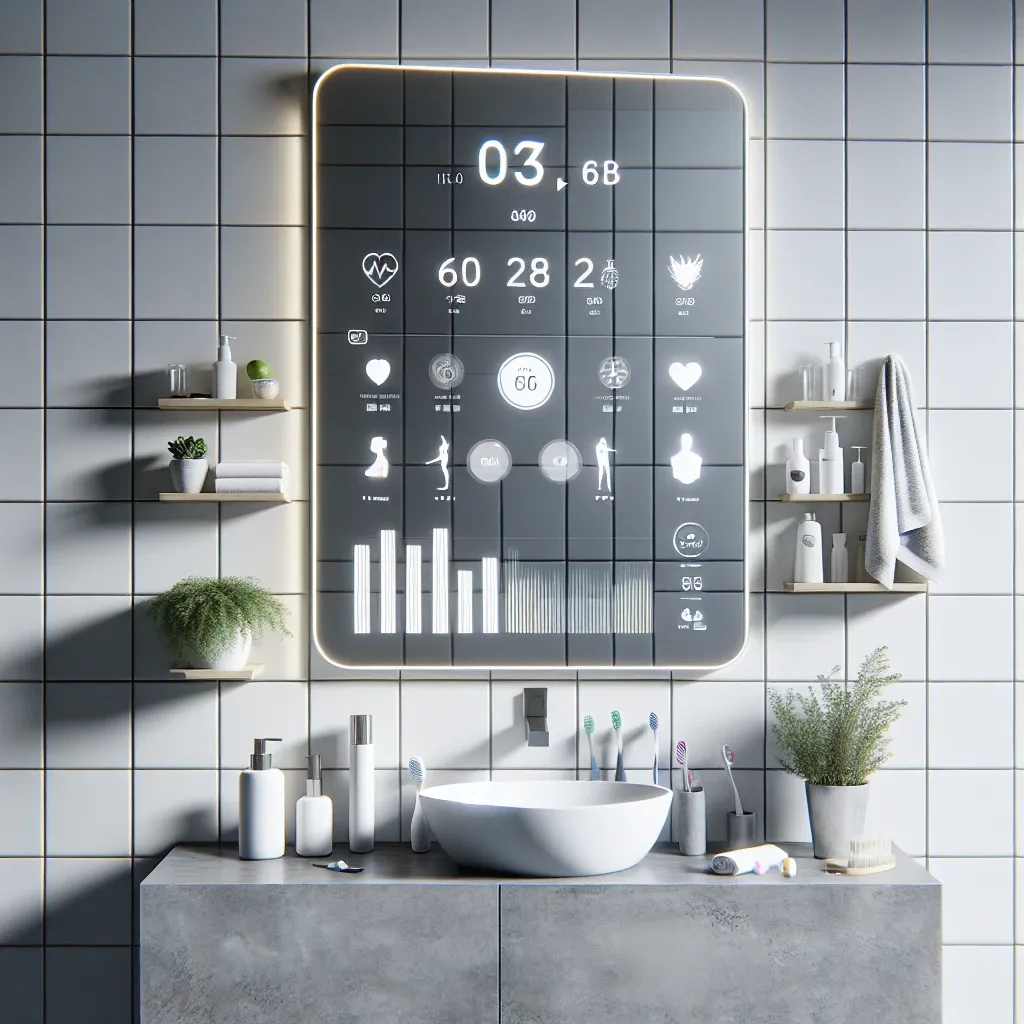Introduction
In an age where technology seamlessly integrates with our daily lives, the emergence of smart mirrors has brought forth a new era of health and wellness monitoring. These innovative devices not only reflect our image but also provide valuable insights into our health metrics and personalized recommendations, making it easier than ever to prioritize well-being.
The Evolution of Smart Mirrors
Smart mirrors have evolved significantly over the past few years. Initially, they were novelty items found in tech expos, but advancements in technology have transformed them into essential health tools. The integration of sensors, touch screens, and artificial intelligence has paved the way for their current sophisticated capabilities.
Historical Context
The concept of mirrors displaying more than just reflections isn’t new. Early attempts can be traced back to the mid-20th century when researchers explored interactive displays. However, it wasn’t until the rise of smart technology in the 21st century that the idea gained traction. With the advent of the Internet of Things (IoT) and advancements in data analytics, smart mirrors became a reality.
Current Trends
As of 2023, smart mirrors are not just luxury items; they are becoming commonplace in homes, gyms, and wellness centers worldwide. Companies are continuously innovating, adding features that cater to the needs of health-conscious consumers.
How Smart Mirrors Work
At their core, smart mirrors function by utilizing various sensors and data integration methods. They can track health metrics such as:
- Heart rate
- Sleep quality
- Body mass index (BMI)
- Calories burned
- Skin condition
These metrics are often displayed in real-time, allowing users to monitor changes over time. The use of machine learning algorithms helps in providing personalized recommendations based on individual health goals and metrics.
Personalized Wellness Recommendations
Tailored to Individual Needs
One of the standout features of smart mirrors is their ability to provide personalized wellness recommendations. Using data collected from the user, smart mirrors can suggest:
- Fitness routines
- Dietary adjustments
- Skincare regimens
- Stress management techniques
This level of personalization is achieved through algorithms that analyze past behaviors and outcomes, ensuring that the advice given is relevant and actionable.
Real-Life Examples
For instance, a user who regularly tracks their sleep patterns might receive recommendations for improving sleep quality based on their nightly data. Similarly, if someone’s heart rate indicates high stress levels, the mirror might suggest meditation or breathing exercises.
The Benefits of Smart Mirrors
The integration of smart mirrors into daily routines offers numerous benefits:
- Enhanced self-awareness: Users gain a better understanding of their health metrics, empowering them to make informed decisions.
- Convenience: With everything displayed in one place, users can easily keep track of their health without needing multiple devices.
- Motivation: Seeing progress visually can boost motivation, encouraging users to stick to their wellness goals.
- Time-saving: Smart mirrors can minimize the time spent researching health information, as they provide tailored recommendations right when users need them.
Challenges and Considerations
Despite their advantages, there are challenges and considerations to keep in mind when adopting smart mirrors:
- Privacy concerns: As with any smart device, the collection and storage of personal health data raise privacy issues. Users must be aware of the data policies and choose devices from reputable manufacturers.
- Dependence on technology: Over-reliance on smart technology might lead to reduced physical consultations with healthcare professionals.
- Cost: High-quality smart mirrors can be expensive, potentially limiting accessibility for some individuals.
Future Predictions
Looking ahead, the future of smart mirrors is promising. Innovations may include:
- Advanced AI integration: More sophisticated algorithms that can predict health issues before they arise.
- Improved user interfaces: Enhanced interaction through voice commands and gestures.
- Expanded functionalities: Integration with other smart home devices for a holistic health monitoring system.
Conclusion
Smart mirrors are more than just a reflection of our physical selves; they are a gateway to understanding and nurturing our health better. By displaying health metrics and offering personalized wellness recommendations, these innovative devices empower individuals to take charge of their well-being in a way that is not only convenient but also effective. As technology continues to evolve, the potential for smart mirrors to enhance our health and wellness journey is boundless.

